Alexandre Cabanel (1823-1889)
[Alexander Cabanel]
The story of Phaedra is one of the gloomiest tragedies of Greek legend.
She was the daughter of Minos, King of Crete, and Pasiphae, the sister of Ariadne and
the second wife of Thesus. She had a stepson, Hippolytus by name. He failed in paying
due homage and worship to Venus, and the goddess, in revenge, resolved on
his destruction. To begin with, she inspired his stepmother with an intense and
unnatural passion for him, which led her to make advances which the youth indignantly rejected.
Phaedra than accused Hippolytus to his father, and Theseus, his jealousy aroused, demanded
his life from Neptune. Accordingly, Hippolytus was thrown from his chariot while driving on the
seashore, and dragged along the sands till he was dead. The artist shows the
unhappy woman, tormented by the memory of her crime, watched over in her chamber by her anxious and weary attendants.
It was in this scene of Racine's tragedy that the famous French actress, Rachel, achieved
her most magnificent tragic success upon the stage, and in it Mme. Sarah
Bernhardt reaches the apex of her art.
Alexandre Cabanel, who died in 1889, was born at
Montpellier in 1823. He began painting as a pupil of Picot, in the old classical manner,
but soon adopted a more modern and natural style of his own. After carrying off the
Prix de Rome in 1845, he took medal after medal, was made an Officer of the Legion of Honor
and a Member of the Institute of France. His pictures are to be found in all the European
museums and many of our own, and in every private collection of note in America and abroad;
and his decorative paintings in the Louvre and other public buildings are among the
masterpieces of that art. He was also a portrait painter of the first order, especially of
women, and no small part of his large fortune came to him from his commissions in this line,
many of his sitters being Americans. "Phadra" was painted by him in 1880, and the original
picture is in the collection of Mr. John T. Martin, of Brooklyn, N.Y.
Unquestionably the most famous of the late Alexandre Cabanel's pictures is his "Birth of Venus."
The original painting is in the collection of the Luxembourg, but engravings, photographs, and
other reproductions have made it familiar to the world world as one of the foremost classics of
modern art. Under a sky rosy with dawn, Venus Astarte wakes to life on the waves of which she is
born. The picture is not only of a matchelss grace of composition, but in its soft, delicate color
and tender modeling the crowning masterpiece of the artist's productions. It was first exhibited
at the Salon of 1875, where it made the sensation of the year.
Previous Artist Next Artist



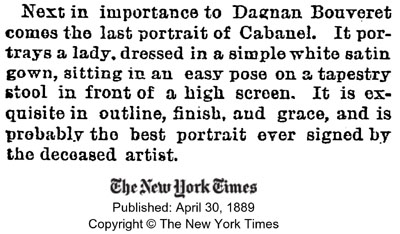
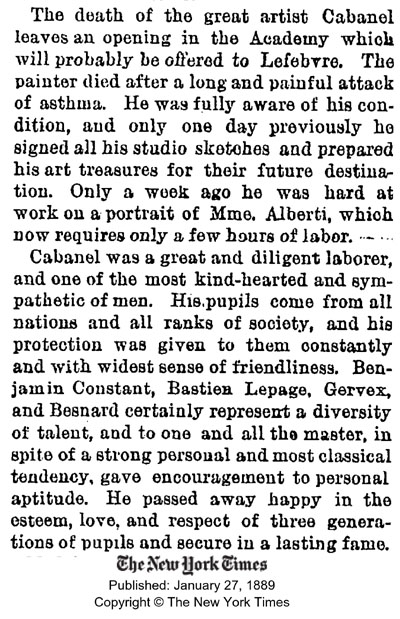
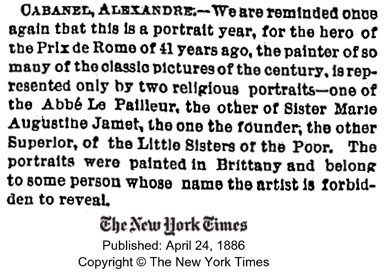
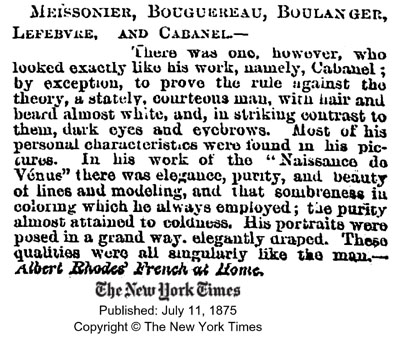
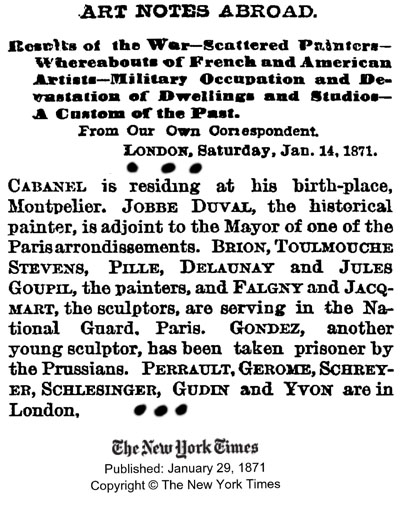


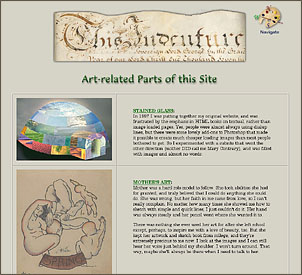
![]() Copyright © 2007, Mary S. Van Deusen
Copyright © 2007, Mary S. Van Deusen